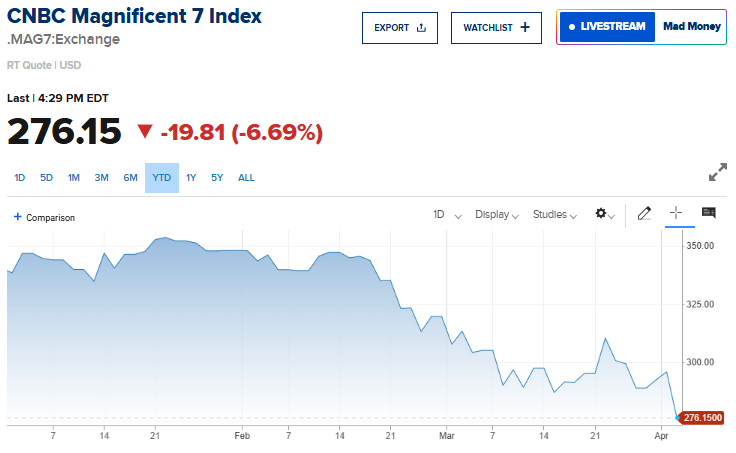How to allocate your portfolio right here, right now
A woman on the radio talks about revolution when it’s already passed her by
Bob Dylan didn’t have this to sing about, You know it feels good to be alive
I saw the decade in, when it seemed the world could change in the blink of an eye
And if anything then there’s your sign of the times
I was alive and I waited, waited I was alive and I waited for this
Right here, right now There is no other place I want to be
Right here, right now Watching the world wake up from history – Jesus Jones: Right here, right now (1990)
“Flip It” is the idea of being a true contrarian and looking at everything upside down. It’s also complimentary to the concept that there are two sides to most political, economic and market transactions, which means that we can look through the reported analysis and see fuller ramifications and implications from those transactions.
For example, the good news about higher rates is that we need the markets to return to some sort of market-based pricing for capital and more importantly to investors, we need somewhere to get some reasonable interest on our savings. The bad news is that there’s about $20 trillion of government debt that will need to be serviced when those rates rise. $20 trillion in debt at 5% per year is $1 trillion in interest per year in an economy that does about $15 trillion a year total.
Stepping back and looking at the entire picture then: A spike in US tax receipts as the ongoing stock market bubble gets bigger, a la the dot-com tech bubble in 1999, would enable the government to report paying down that debt, at least a little bit for a little while. Likewise, the ability for the US government to borrow yet trillions more dollars to simply cover interest on existing debt. The government could issue $5 trillion in new debt per year to fund its budget and service the old debt. Ponzi-scheme, yes? What’s new?
Most analysts and investors tell us that we should discount the outsized cash balances held in overseas affiliates because it will be taxed when it gets brought stateside. Flip It – At some point in the next downturn, the RepublicanDemocrat Regime will likely give a tax holiday to cash repatriation for giant corporations. Unfair for big business? You betcha.
What else would enable the corporate earnings boom to continue? What if the Main Street economy finally does see some real improvement? What if employment actually picks up and entrepreneurs start starting new businesses? On the flipside of that logic is the bear case of arguing that the problems on Main Street will inevitably drag down corporate profit growth and margins and earnings.
Republicans and Democrats these days agree that corporate tax rates should be lower for the economy to get back on a sustainable growth trajectory. But we need to Flip It to see the other side of that. If real, actual paid out corporate tax rates are already at a fraction of the rates paid by small, private companies, that means there’s an unlevel playing field favoring the big guys. A small web content company based in New Mexico that’s actually paying 30% plus in income taxes on its real profits trying to compete against a Fox Broadcasting (FOXA), Disney (DIS) and GE/Comcast which have paid a real income tax rate of less than 15% per year and can claim multi-million dollar welfare checks for making big movies in New Mexico has a cost basis that’s 15% plus higher for everything they do than those giant corporations it is competing against.
If the government were to balance the playing field by completely simplifying and equalizing the taxation process and eliminating all loopholes, subsidies and tax credits, the resulting boom in innovation and small business creation would truly sustain our economy. But the corporate masters would lose a big part of their market protection, which would erode corporate profits, which would drive stock prices lower for a few years until the new innovative entrepreneurs bring their companies public to finish the process of creatively destroying the stagnant status quo. Which means that with any threat of a serious market downturn or financial crisis, we’re more likely to see yet more tax breaks, subsidies and loopholes for giant corporations which will further drive up corporate profits for the short-term which should help drive up stock prices for the short-term.
The bailouts, QE, ZIRP, tax policies, trade policies, war policies, local economic development policies, lobbying, access to lawmakers, and so on…these are the ammunition that our economy and stock market have been built upon. We set our portfolios up to benefit from these dynamics as they were setting themselves up post-2008 financial crisis and many of those bullets have now been fired. But not all of them.
I’ve repeatedly talked about how our analysis points to this ongoing stock market bubble lasting a while longer and getting bigger still. Even in the last month, that has been what we’ve seen play out. Nothing’s changed yet, but as prices continue to get higher, risk in the longside of the portfolio continues to climb. Trim down some of your giant corporate winners, but know that the cards remain stacked in their favor.
The upshot means that I think an ideal stock portfolio here is as follows:
50-75% long.
0-25% short.
10-30% cash.
10-20% gold and silver
1% BitCoin
0% bonds/Treasuries/CDs
Outside of the stock portfolio, I recommend buying land in depressed local markets, investing in your own entrepreneurial ideas, buying long-established private businesses with steady cash flows for 3-4x the average of the last few years’ cash flows, and waiting patiently for the right time and place to put that money to use.
If you’re not long stocks or not long enough stock, don’t rush into the markets but don’t hesitate to at least get started with a toe in the water. With the markets up in a straight line for the last five years, one year and six weeks, I would be more cautious about my scaling into the long positions right now, which means I’d look at buying about 1/5 of how much of each position I eventually want to own instead of starting with a 1/3 position like I usually suggest.
In sum, then, Revolution Investing continues to revolutionize investing.



